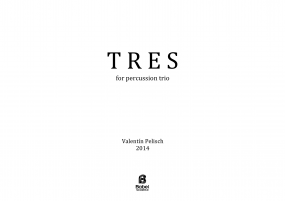Noise is interrupting my practice: silence is when my reaction is quiet, silence is my protest against the way things are.
ISMN : 979-0-2325-7003-7
- Login to create your own lists
Noise is interrupting my practice: silence is when my reaction is quiet, silence is my protest against the way things are.
“Noise...” was one response to a bad situation in Asia that my fists couldn’t solve. At the time, I came across this story about Ajahn Chah, a prominent Thai Buddhist:
“A young monk came to live in the monastery where Ajahn Chah was practicing. The people who lived in the town outside the monastery were holding a series of festivals in which they sang and danced all night long. When the monks would rise at three- thirty in the morning to begin their meditation, the parties from the night before would still be going strong. At last, one morning the young monk cried out to Ajahn Chah, “Venerable One, the noise is interrupting my practice – I can’t meditate with all this noise!” “The noise isn’t bothering you,” Ajahn responded. “You are bothering the noise.... Silence is not a function of what we think of as silence. It’s when my reaction is quiet. What’s silent is my protest against the way things are.” (Prochnik, 2010)
...so I was.
This piece is a reflection of what otherwise remains in danger of going unheard.
When a piano is played in normal ways (fingers on the keyboard, feet on pedals) the ear is tuned to pitch and temporal concerns with less thought given to timbre. At the same time, there are loads of little noises that exist at the edges of our attention when playing normally. If these little noises rise in importance to overlap with the dominant pitch/rhythmic materials, then I suppose the pianist will become annoyed if they interfere with the language (if pitch/rhythm dominant) of the composition/improvisation they are playing.
In this piece, written for and dedicated to Pavlos Antoniadis, I wanted to turn this around, to protest the relation between “proper” cultural artefacts and the noises at the boundaries. In other words, I wanted to let the small, creaky, transient noises that are inherently tied to normal tone production interrupt this practice, to be silent no more.
“Noise …” produces an oblique relation to the Doppler effect (such as when a car moves towards you, the frequency of its sound waves increases as its length decreases, leading to a higher pitch. Then as the car moves away from you, the frequency of the sound waves decreases as the length of the sound wave increases and the pitch lowers). In my composition, it is not the position of the object (car) that moves, this stays the same. Rather, what moves is the perception of the position of the object in two ways: 1st, each sound, each noise will be received by microphones in different locations all over the piano, from keyboard to far end, and from hammers to pedals; as well as by microphones in different locations in the hall – which may be far removed. 2nd, each sound, each noise once picked up by any microphone can be panned to any loudspeaker in the hall. So, both the sound object (car) and subject (human standing on street) remain static, while the animated perception of sound occurs as a function of physical distance (mic placement) and simulated sound placement/movement (panning).
The performance of the piece will require as few as five mics with an engineer to control the board. Since the activity of the amplification is quite active, I think of this composition as a duet.
Citation
George Prochnik (2010). In Pursuit of Silence: Listening for Meaning in a World of Noise. New York: Knopf Doubleday Publishing Group, 224 p.
Amplification
Pages - 26





